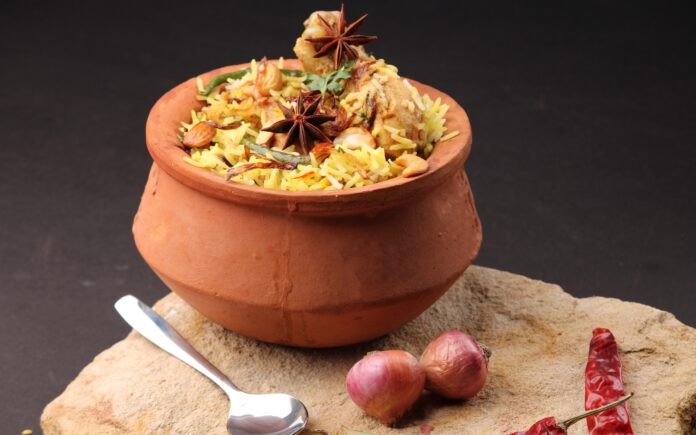Among India’s vast culinary treasures, biryani stands tall as a timeless favorite. Every region has its own take on this iconic dish, but one variation that has stood out for its rich flavor and authentic appeal is the biryani handi. Known for its traditional cooking style and deep, layered flavors, the biryani handi brings together the best of taste, aroma, and presentation.
So, what exactly makes biryani handi so special? Let’s dive into the world of this mouthwatering delicacy and uncover what sets it apart from other biryani styles.
The Handi: A Vessel of Tradition
The term “handi” refers to the thick, round-bottomed clay or metal pot used to cook this version of biryani. Unlike modern cooking pots, the handi has a unique ability to retain and evenly distribute heat, which is essential for the slow-cooking process. This traditional pot not only enhances the cooking experience but also infuses the biryani with an earthy aroma that modern utensils simply can’t replicate.
Cooking biryani in a handi is not just about style; it’s about preserving centuries-old culinary practices. The handi plays a crucial role in giving the biryani handi its distinct taste and texture, something food lovers swear by.
Layered Cooking for Rich Flavors
One of the defining characteristics of biryani handi is the layered cooking method. Raw or partially cooked marinated meat is layered with parboiled basmati rice, fried onions, herbs, and aromatic spices. Saffron milk or rose water is often sprinkled on top to enhance the flavor and visual appeal.
Each layer in the handi is carefully placed to ensure that when the dish is cooked, the flavors meld together perfectly. As the handi is sealed with dough and placed on slow heat (a technique known as dum), the steam gets trapped inside, allowing all the ingredients to cook in their own juices. This slow-cooking method ensures that the meat becomes tender and juicy while the rice soaks up all the fragrant spices.
Aromatic Spices: The Soul of Biryani Handi
Spices are at the heart of every good biryani, and the biryani handi is no exception. A perfect mix of whole and ground spices—like bay leaves, cardamom, cinnamon, cloves, star anise, and cumin—are used to flavor both the meat and the rice. The use of fresh herbs such as mint and coriander adds a refreshing contrast to the richness of the dish.
What makes this dish truly remarkable is the way the spices are balanced. No single flavor dominates; instead, they all blend together to create a harmonious, aromatic experience with every bite.
Handi vs. Other Biryani Styles
While there are several popular biryani styles—Hyderabadi, Lucknowi, Kolkata, and more—the biryani handi holds a unique spot because of its rustic, slow-cooked preparation. Unlike pressure-cooked or instant pot biryanis, handi biryani takes time and patience, but the result is a deeply satisfying meal with an authentic, home-cooked feel.
The handi method also allows for greater customization. Whether you prefer chicken, mutton, or even vegetarian biryani, the handi cooking process enhances the taste of each variation.
Presentation and Experience
Beyond taste, the biryani handi also offers a visual and sensory experience. The moment the dough seal is broken, aromatic steam escapes, signaling the flavorful treasure hidden inside. The beautiful layering of rice and meat, combined with the rustic appeal of the handi pot, makes this dish not just a meal but a celebration.
Conclusion
The biryani handi is more than just a recipe—it’s a celebration of tradition, flavor, and technique. Its unique preparation in a handi, the careful layering, and the slow dum cooking all come together to create a dish that’s rich in taste and culture. Whether you’re a seasoned biryani lover or a curious foodie, trying a biryani handi is an experience you won’t forget.
Next time you crave something flavorful and fulfilling, choose a biryani handi—where tradition meets taste in the most delicious way.
Also Read- From Ordinary to Creamy – Elevate Your Tea



















